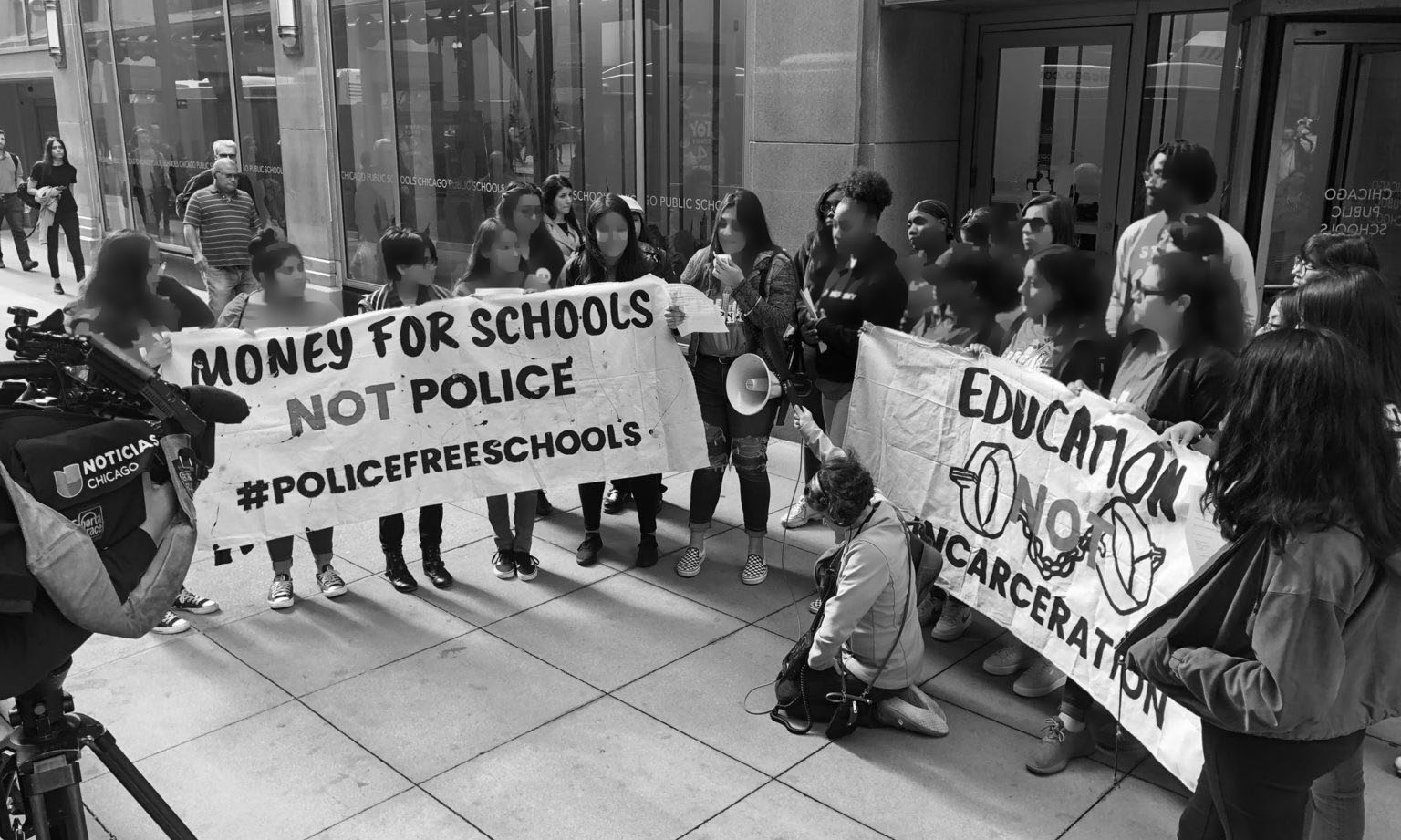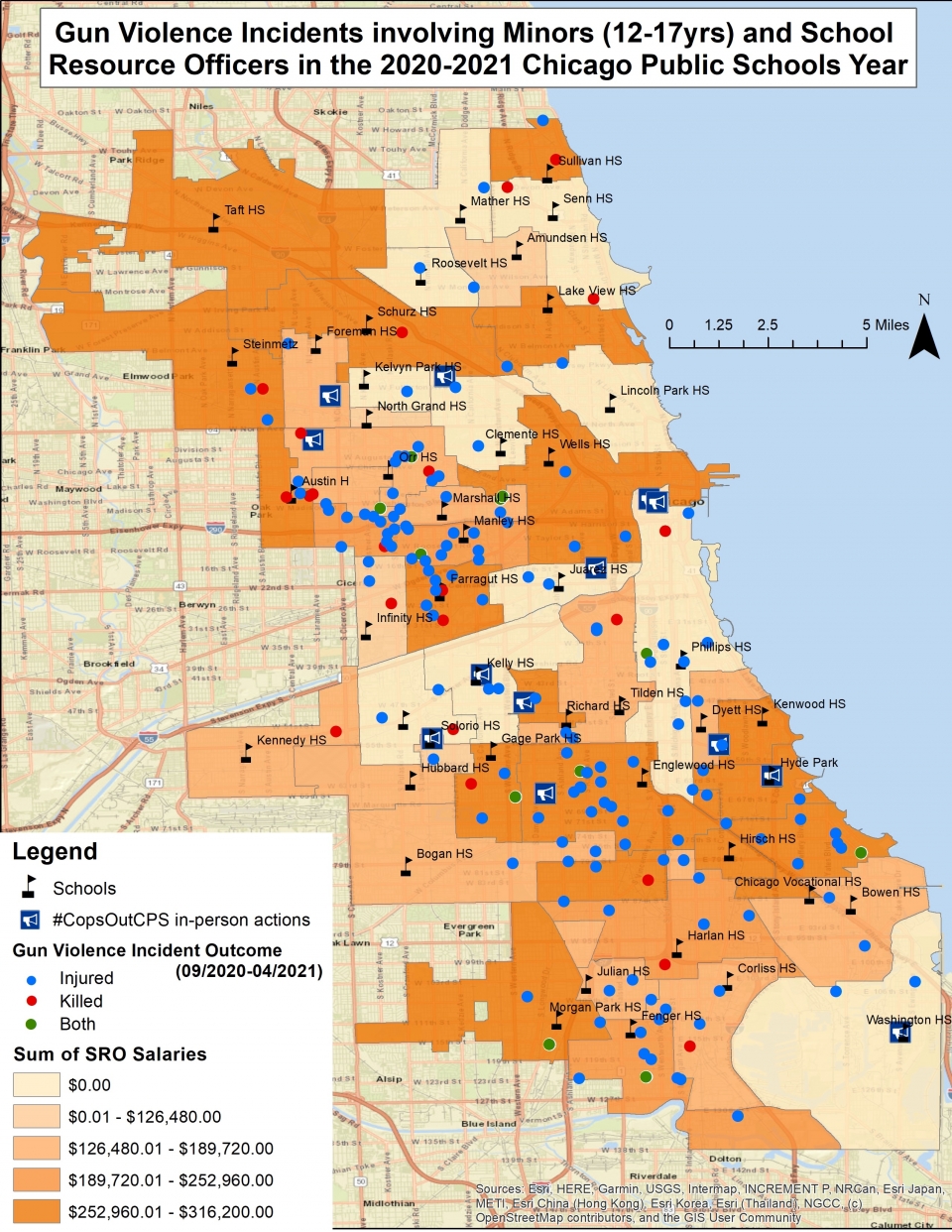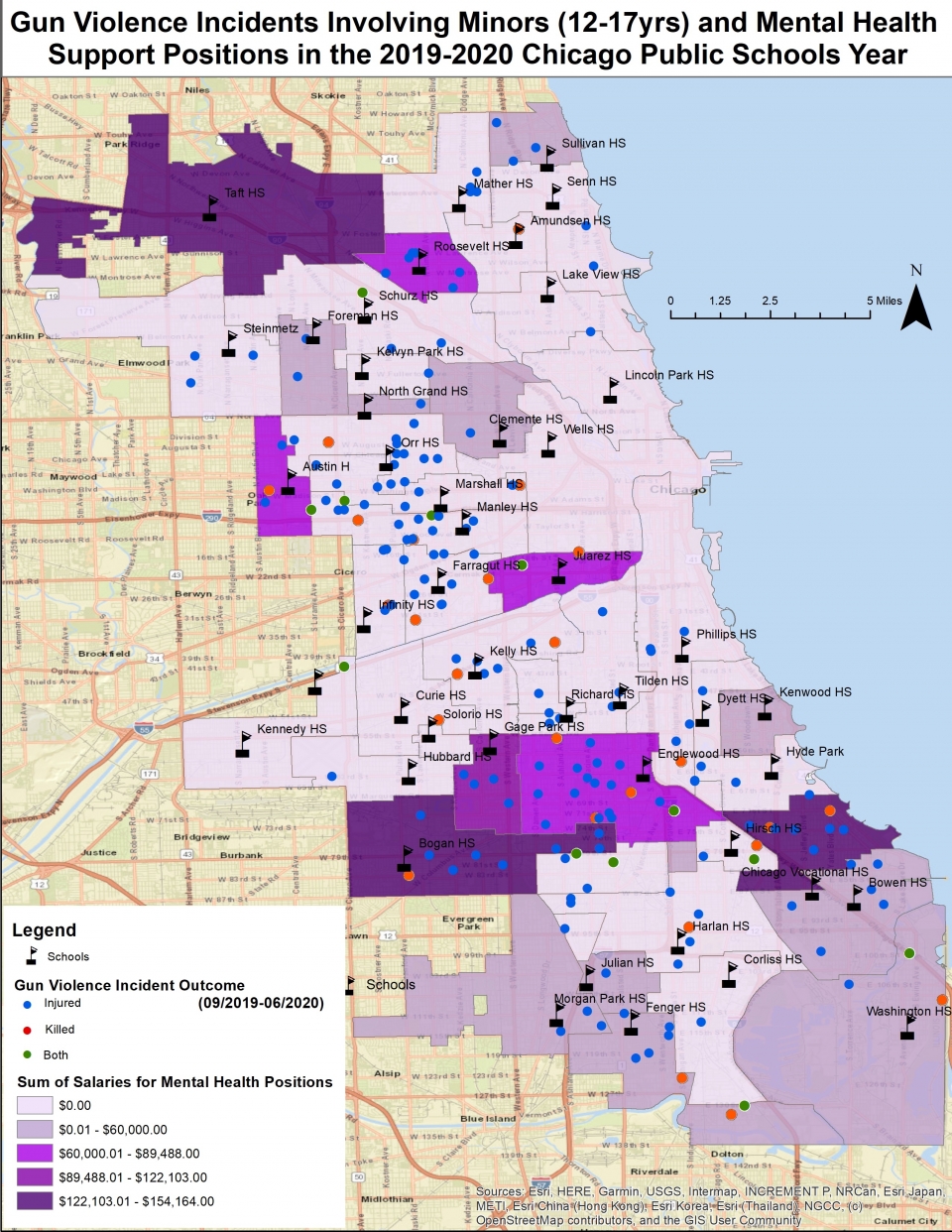
Youth activists take part in an action to remove police from Chicago schools. #CopsOutCPS
In Chicago, where I live, the city provides gun violence survivors with little to no resources that center healing. I say this with personal experience supporting a young person in my family who is a survivor. Rather than providing resources that would help transition youth back to school, provide safety, transportation, and mental health support, I have witnessed how the Chicago police make youth of color feel as if these incidents are their fault. My family and I know that this experience is not unique—it’s something that youth face throughout the city of Chicago and in many communities across the country.
Healing for young survivors of gun violence is made especially difficult when they are forced to interact with police officers at their schools and in their communities. It is well documented how police in schools—known as “school resource officers (SRO)”—accelerate the school-to-prison pipeline. That’s why across the U.S., students and community groups have organized to remove police as part of the national #PoliceFreeSchools campaign. In Chicago, students and organizations, including AFSC, have formed the #CopsOutCPS coalition.
Our coalition has demanded Mayor Lori Lightfoot and school board officials take steps to remove police from our schools. And to invest in mental health services and other programs that young people and other community members truly need to build safety.
Last year, our #CopsOutCPS coalition published a report about the harm that police officers inside of schools have on Black students and other students of color. The report:
- Revealed that more than 95% of police incidents in Chicago public schools involve students of color. Those incidents include the use of excessive force and the usage of tasers against students.
- Documented a total of 2,354 misconduct complaints among the 201 SROs assigned to public schools.
After analyzing this data, it made sense to me why CPD came into my home and blamed my loved one for their trauma. Instead of protecting young people from tragedy, police officers are often the reason behind it for so many of us. If Black and Brown youth face violence from police officers in and outside school, what does that leave us with?
As someone who has witnessed and experienced losses to gun violence, I have been led to examine how our city invests our tax dollars to address the issue. I’ve researched the disparities between funding for police in schools versus funding for mental health support services. This research has found:
Gun violence disproportionately impacts young people of color: This map shows how gun violence involving youth are concentrated in the south and west side of Chicago, historically made up of predominantly Black neighborhoods. Not a week goes go by without at least one incident occurring.

While not every incident is tracked or makes the news, all are felt by community members. We are in a constant state of grief, and no one helps us but us. High school administrators and staff continually deal with their students getting injured and even killed during the school year.
Lack of investment in mental health support in schools: These 2019-2020 maps show how Chicago Public Schools had SROs on their campus but no staff who specialized in mental health support. In addition, they don’t have the resources for preventive measures like conflict resolution training or wrap-around social services.

After the historic uprisings in response to the police murder of George Floyd in 2020, several schools choose to remove SROs from their campuses last year. However, these schools were not in areas most impacted by gun violence, while the schools that kept SROs continued to see young people injured and killed by gun violence. And even where SROs were removed from some schools, money was not shifted to supporting students who are affected by violence. These skewed school funding priorities are failing students who are experiencing immense trauma, which can have devastating and lasting effects.
Our #CopsOutCPS coalition has organized to get police out of schools—through petitions, open letters, public comments, and actions. But Mayor Lori Lightfoot and school board members have failed to respond to the needs of youth in our city in several ways. Members of her appointed school board have repeatedly demonstrated condescension toward youth coalition members, telling us that we didn’t know what safety really consists of. As public pressure mounted, the board eventually shifted decision-making over SROs to individual schools.
It’s long past time for Chicago—and cities across the country—to truly invest in keeping students safe. We must remove police from schools and fully fund support mechanisms for students and tackling the root causes of violence. Black and Brown youth will not be safe until we defund and abolish policing—and invest in expansive and holistic caring and supportive programs for young people. Today school communities are showing, one at a time, that we are ready for this change. This summer, the majority of Chicago high schools voted to remove some or all of their officers. One at a time we will turn the tides, if we must, with or without the elected officials whose actual job it is to keep students safe.